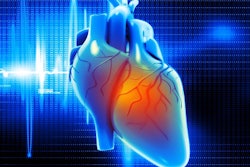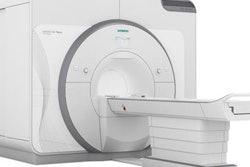Tuesday, November 27 | 10:55 a.m.-11:05 a.m. | RC303-09 | Room E350
By monitoring blood flow with 4D MRI, researchers from France were able to confirm the effectiveness of a new technique for valve-sparing aortic root replacement.The group, led by Dr. Francois Pontana, PhD, from Centre Hospitalier Régional Universitaire de Lille, acquired 4D MRI scans of 27 patients who underwent aortic root replacement via a new surgical technique or the conventional David procedure. Using computer software (Caas MR 4D Flow, Pie Medical Imaging), Pontana and colleagues were able to obtain key blood flow measurements from the imaging data, including wall shear stress, flow patterns, and flow eccentricity.
"4D flow MRI is a valuable tool in the clinical context of aortic surgery," Pontana told AuntMinnie.com. "It allows a detailed analysis of the postsurgical hemodynamic profile of the thoracic aorta."
An analysis of the 4D MRI data revealed no statistically significant differences in blood flow measurements between patients who underwent surgery with the new or standard technique. Both methods led to similar figures in terms of blood flow pressure, pattern, and displacement.
"Our study demonstrates similar hemodynamics and blood flow patterns with a simplified David procedure conceived to ease the operative procedure, avoid prosthesis and annular deformation, and facilitate coronary reimplantation compared with the classical one," Pontana said.


.fFmgij6Hin.png?auto=compress%2Cformat&fit=crop&h=100&q=70&w=100)





.fFmgij6Hin.png?auto=compress%2Cformat&fit=crop&h=167&q=70&w=250)











